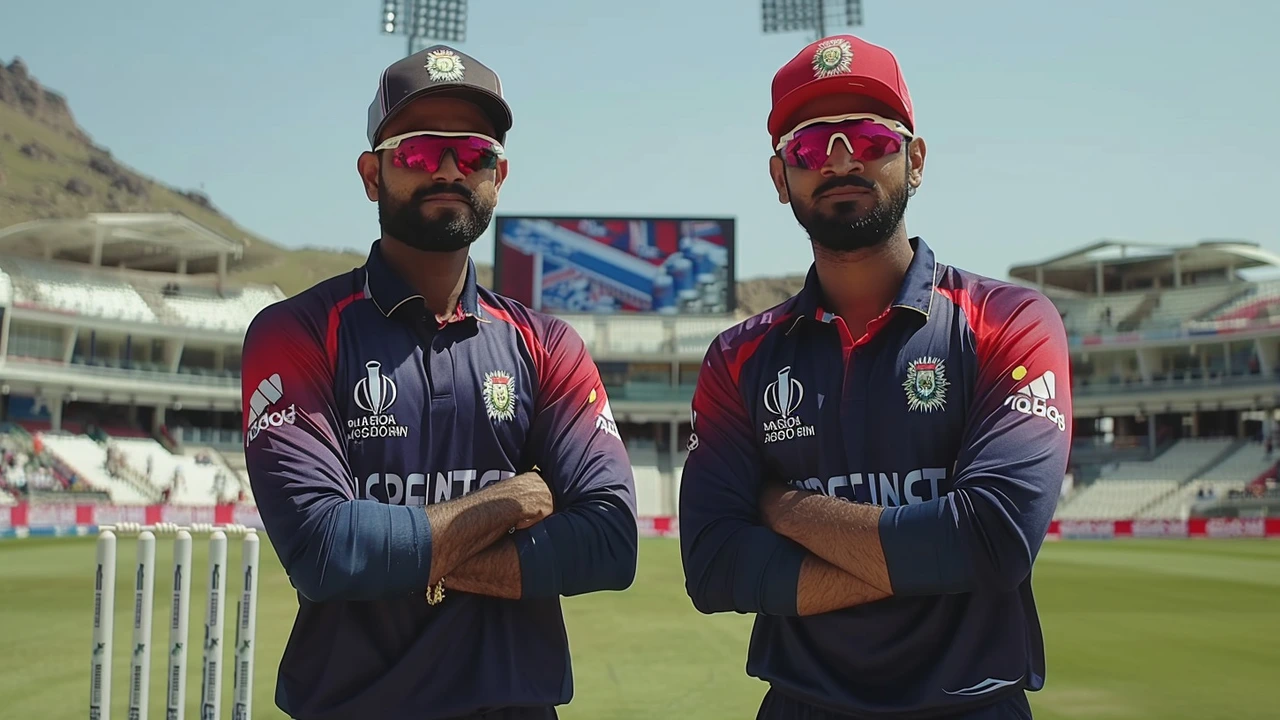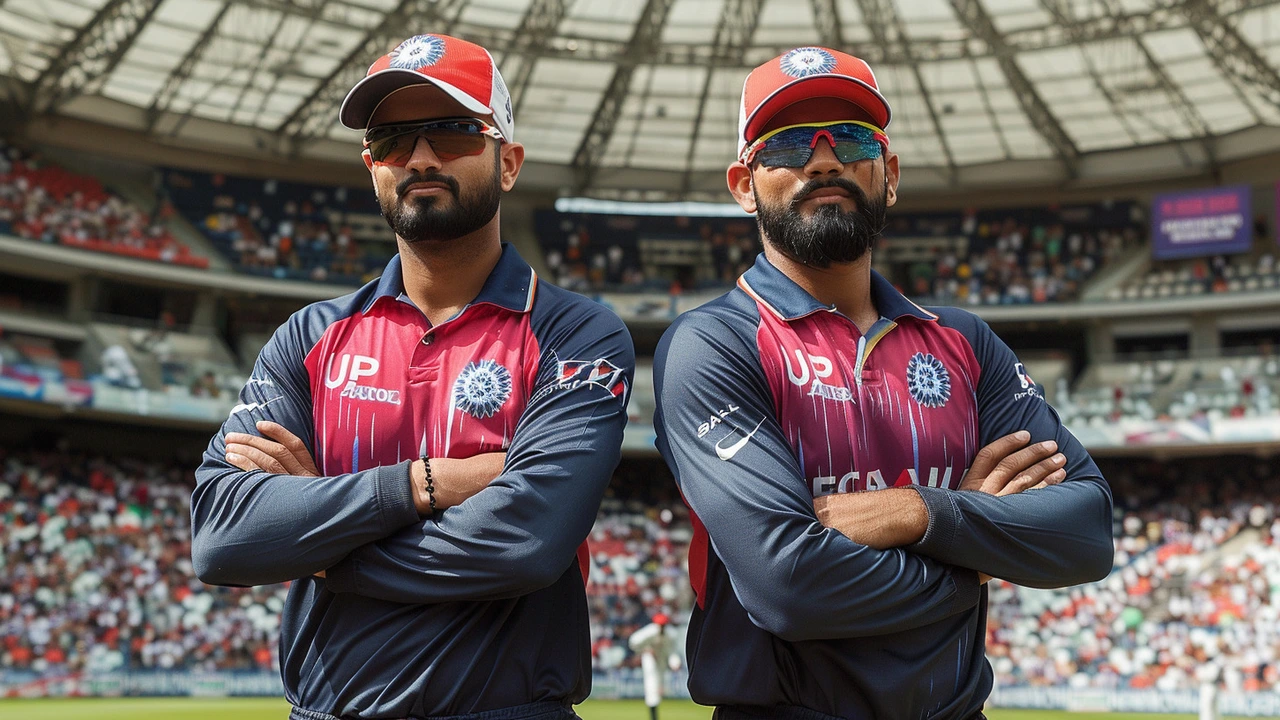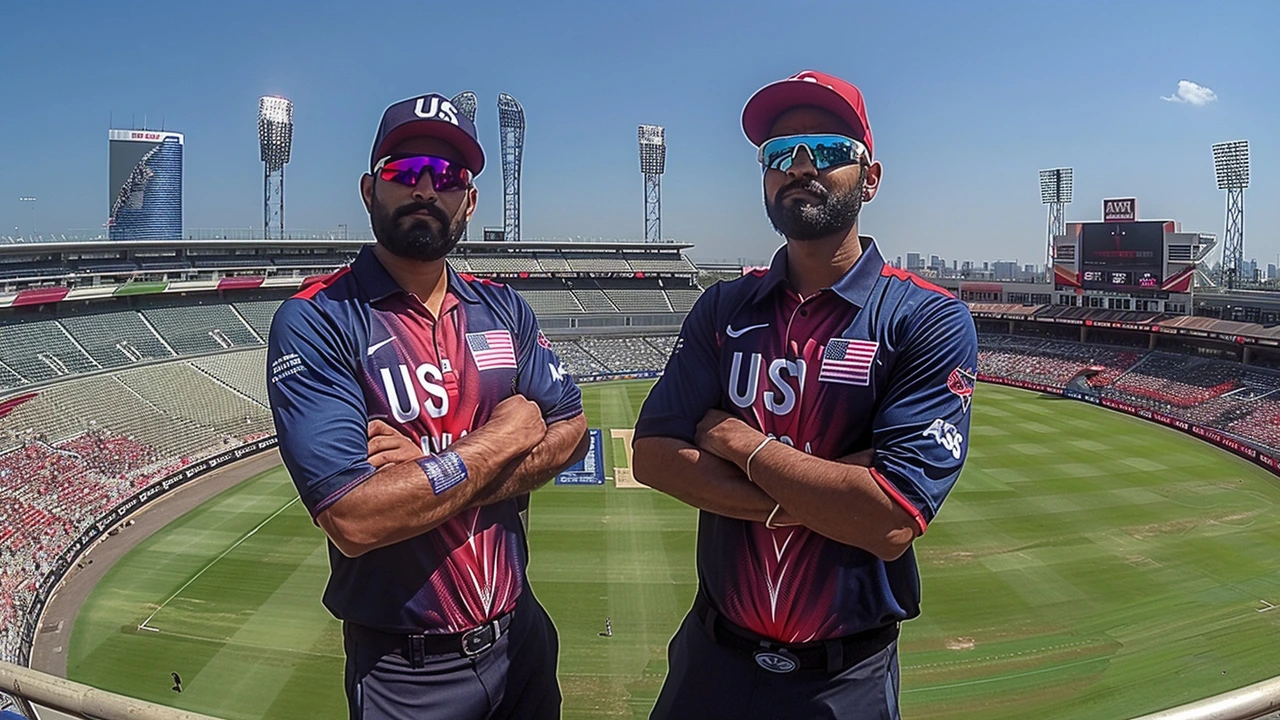Cricket's Growth in America: A New Horizon
The T20 World Cup has arrived in a territory that cricket enthusiasts might not typically associate with the sport—the United States. This event marks a monumental moment for cricket in America, particularly for players like Pakistan-born fast bowler Ali Khan, who is set to take the field as a member of the USA's T20 World Cup squad. The arrival of the World Cup has not just brought the game to American soil but has also signaled a shift in perception. Cricket, a sport once alien to most Americans, is slowly but surely making its presence felt. Ali Khan, who has become a recognizable figure in American cricket, notes the gradual yet significant changes as people in the country become more aware of cricket.
The USA cricket team has made remarkably swift strides in recent years. From languishing in Division Four, the team has ascended to gain One-Day International (ODI) status. This journey has been nothing short of extraordinary, and their recent victory over Bangladesh in a T20I series underscores the team’s growing competency and competitive spirit. This win has not only boosted the team’s confidence but also raised eyebrows in the international cricket community, signaling that the USA is becoming a serious contender in the world of cricket.
One of the key strategies that USA cricket administrators have employed is the 'expat route.' By selecting cricketers from cricketing nations like the West Indies, India, Pakistan, and South Africa, the USA cricket team has gained a wealth of experience and talent. These players, who may have either abandoned their dreams of representing their home countries or settled in the US for various reasons, have injected both skill and diversity into the team. This approach has proven to be a double-edged sword, however. While it has fast-tracked the team’s progress, there are growing concerns that the reliance on expat players might overshadow the development of homegrown talent.
The 4.5-million-strong South Asian diaspora in the United States is a primary follower of cricket. Despite the World Cup's presence, the enthusiasm among the general American public remains lukewarm. Cricket has yet to embed itself into the cultural fabric of mainstream America, where sports like baseball, basketball, and football dominate. This limited buzz among locals poses a challenge to the long-term growth of cricket in the country.
Infrastructure: The Roadblock
A significant issue that the USA cricket faces is the lack of suitable infrastructure. To nurture and develop cricket in a country where it hasn’t traditionally been played, appropriate facilities are essential. Currently, the USA grapples with this limitation, and it remains a major hurdle in the sport's growth. For cricket to flourish in America, there needs to be a concerted effort to build and maintain proper grounds, training centers, and overall infrastructure.

The Squad: A Melting Pot of Talent
This T20 World Cup sees a unique assembly of players in the USA cricket team, including cricketers like Saurabh Netravalkar, Noshtush Kenige, and Milind Kumar. Their participation highlights the diverse roots and cricketing backgrounds that form the backbone of the team. As these players prepare to face formidable teams such as India, Pakistan, Canada, and Ireland in Group A, the emotions run high. For those with roots in India, the clash against the Rohit Sharma-led Indian squad on June 12 will be particularly poignant.
Saurabh Netravalkar, who once played for the Indian U-19 team, now leads the USA team. His journey from India to the United States exemplifies the new avenues of cricketing careers that the globalized world presents. Similarly, Noshtush Kenige and Milind Kumar bring with them experiences from competitive cricket in India, further bolstering the team’s skill set.
Looking Ahead: Challenges and Opportunities
While the immediate focus is on the T20 World Cup, the long-term growth of cricket in the USA hinges on balancing the development of local talent with the inclusion of experienced expat players. The current strategy has shown immediate results, but for sustained success, it is crucial to invest in junior development programs. Grassroots initiatives, school-level cricket, and local leagues must be encouraged to create a pipeline of homegrown talent.
The unique blend of players in the USA cricket team presents both challenges and opportunities. As cricket continues to gain a foothold in the country, the administration needs to address infrastructural shortcomings and create a robust system to nurture local cricketers. Just as the sport unites different nationalities under one team, cricket has the potential to bring together diverse communities in the USA, fostering a new sporting culture.

The Cultural Integration
Cricket's integration into American culture will not happen overnight. It requires strategic efforts from stakeholders, including the cricket board, players, sponsors, and the community. Awareness campaigns, school programs, and celebrity endorsements can play a pivotal role in popularizing the sport. Engaging local media and creating broadcasting opportunities can also help bring cricket into mainstream sports consciousness in America.
Community engagement is another vital aspect. Local tournaments and cricket festivals can bridge the gap between expat followers and local enthusiasts, fostering a shared love for the game. Additionally, involving cricket legends from cricketing nations to mentor young American cricketers can provide the much-needed inspiration and expertise.
As the USA cricket team takes on international giants in the T20 World Cup, their journey is symbolic of cricket's potential growth in uncharted territories. The blend of expat experience and emerging local talent is a testament to cricket's universal appeal and adaptability. The road ahead is filled with challenges, but with the right strategies and community support, cricket can certainly find a second home in the United States.


Cara McKinzie
OMG the USA finally got its own cricket hero and the whole world is shook!
Joseph Conlon
Cricket's presence in the US is nothing short of a cultural experiment that no one invited but somehow showed up at the party; the fact that we have an entire squad stacked with expats is a testament to how we prefer to import talent rather than grow it from the ground up. The T20 World Cup might be a glittering stage, but underneath the lights lies a deeper issue of identity crisis for American cricket. While the author paints a rosy picture of the expat route, the reality feels more like a crutch that hides the lack of grassroots development. I see the same pattern everywhere: we celebrate quick wins and ignore the long game of building local pipelines. The reliance on players like Ali Khan gives headlines, yet it sidelines a whole generation of homegrown kids who never see a proper pitch. If the USA wants to be taken seriously, it needs to invest in school leagues, not just stadium lights for the big events. The infrastructure gap is real, and no amount of star power can fill an empty field. Moreover, fans in the diaspora are enthusiastic, but the average American still doesn’t know what a yorker is. This disconnect makes the whole enterprise feel like a novelty act. The board should ask itself whether it wants a temporary spectacle or a sustainable sport. A balanced approach would involve mentoring programs where expats train locals, not just replace them. The long‑term success will hinge on community outreach, not just tournament hype. In short, the expat model is a double‑edged sword that slices both ways, and we need a plan that doesn’t just swing for the fences every time. We have the chance to set up academies, partner with universities, and create a pipeline that actually feeds the national team. Without that, the whole effort will crumble once the buzz fades. So let’s stop glorifying shortcuts and start building foundations.
Mohit Singh
The expat influx may look shiny, but it's basically a shortcut that tells local talent to step aside; we need homegrown players who understand the American hustle, not just borrowed skill. The article glosses over the fact that without proper fields, these imported stars will soon run out of places to practice. It's frustrating to watch a sport trying to find its footing while relying on borrowed legs. The focus should shift to building youth programs, not just playing with imported names. Until we stop treating cricket like a foreign import and start nurturing it domestically, the hype will be meaningless.
Damian Liszkiewicz
Seeing cricket step onto American soil feels like watching a cultural bridge being built, one pitch at a time 😊. The diversity of the squad is a reminder that sport can unite different backgrounds, and that’s something we should celebrate 🌍. Let’s hope the infrastructure catches up so the game can truly take root.
Angela Arribas
The article contains several typographical errors that detract from its credibility. Please proofread before publishing. ;)
Sienna Ficken
Oh great, another “miracle” story about expats saving a sport-because nothing says sustainable development like importing talent and hoping the locals will magically appear. The T20 World Cup is the perfect excuse to plaster a few foreign faces on a billboard while the neighborhood parks stay empty. If only they could conjure a grassroots movement as easily as they summon overseas players. Maybe next they’ll announce a plan to teach baseball to the British.
Zac Death
I'm really excited to see cricket gaining traction in the US, especially with such a vibrant mix of players bringing different experiences to the field. It’s amazing how the sport can act as a common language for so many communities, creating new friendships and opportunities. At the same time, I think we all agree that building proper facilities should be a top priority; without fields and training centres, the momentum could stall. The enthusiasm from the diaspora is a fantastic start, but we need to translate that into local interest by organizing school tournaments and community events. It’s also crucial that we support the expat players while simultaneously investing in homegrown talent, so the team isn’t dependent on imports forever. I believe with the right balance, we can see a generation of American-born cricketers emerging in the near future. Let’s keep the conversation positive and push for the resources needed to make this a lasting movement. Together we can help cricket find its second home here.
Lizzie Fournier
Cricket’s growth in the US is a team effort, and every fan, player, and coach has a role to play. By welcoming both expat talent and nurturing local kids, we can create a vibrant cricket culture that feels truly American. Let’s keep supporting each other and enjoy the journey.
JAN SAE
Absolutely, Damian, you’ve hit the nail on the head, and I couldn’t agree more, the blend of cultures is a huge asset, but let’s not forget that consistent coaching, regular practice sessions, and community outreach are the pillars that will turn this enthusiasm into a lasting foundation, so keep the momentum going, and together we’ll build the future of cricket in the States!